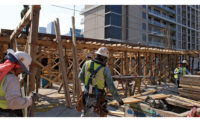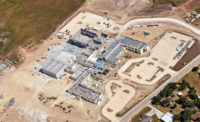A fter years of being "repurposed by attrition," as the project team puts it, a building in Plano, Texas, that has housed the city's government operations for 47 years is finally getting a real makeover. The much-needed $8-million face-lift and expansion of the facility, which now centralizes technology, communication and data services for the city's traffic, police, fire department and administration will now become the Plano Technology Services Center, a Tier 3 data center.
In 2011, the City of Plano saw it had a need for a consolidated data center, says Jim Razinha, Plano facilities manager. "We'd outgrown our existing facility, and of course it was not being used for its original purpose when it became a so-called data center, so we thought we would look at some options," he says.
Razinha adds that "part of it had to do with the infrastructure that's already installed—fiber [optics] and such—so we knew we were site constrained and we needed to bring in an expert consultant to help us determine whether we should even demolish and rebuild or repurpose an existing facility while still keeping our current backbone up for the city."
A request for qualifications brought in 47 responses, with Alliance Architects Inc., Richardson, Texas, eventually winning the bid as designer, and Turner Construction Co., Dallas, named general contractor. The design team determined that gutting and renovating the space was the most cost-effective option for the city, while also making it possible for the data center to remain fully operational during construction.
Keeping 24/7 Operations
"We had to make sure the data center was kept running 24/7 while we were tearing half the building down and rebuilding phase one," says Charlie Reagan, principal-in-charge at Alliance Architects.
The project's first phase, valued at $4.8 million, includes about 21,000 sq ft in renovations to the existing building, with 8,000 sq ft of new construction. Phase two will involve work administrative support space, Razinha says.
Construction on phase one started in October 2012 and should be finished by April. Once the work is completed, several months will be allotted to migrate the existing data center to the new facility and to test it operationally before construction starts on phase two, which the project teams anticipate will be in late June or early July.
The Known And The Unknown
While the design and construction teams expected some challenges in renovating the older building, a few unexpected issues also emerged.
"[One] of the challenges during construction on an older building like this was doing asbestos abatement in an occupied building," Reagan says.
Also not known to the project team was what exactly existed beneath the building.
"A lot of times, especially as old as this building is, the as-builts of what's existing under the ground were not actual construction drawings. They were very old drawings, and we didn't have a great deal of knowledge of what was under the ground," says Jerry Crawford, a division manager at Turner Construction.
"It's amazing some of the stuff we found underground where we really didn't expect it when we were trying to get utilities into the site," adds Reagan. "There was actually the foundation of an old water tower that used to be there that we had to work around."
To get around this, Turner looked to hydro excavation—a procedure that uses pressurized water or air as well as a vacuum to dig out the existing utilities without putting a shovel in the ground and, in particular, without heavy machinery, Crawford explains. "We had always intended on utilizing hydro excavation due to the sensitive nature of the data center, and city hall being right next to us," he says. "For us, in a project like this, it was the normal course of business."
This strategy also made it possible for the ongoing construction work to not disrupt any of the existing services to any city buildings in the area.
Another "nitty-gritty challenge," according to Reagan, was finding "that all the roof drains drained into the sanitary sewer, which now is a no-no, so we had to figure out on the fly how to reroute all the storm drainage for the project since there was no storm sewer readily available."
While the project team in Plano is not shooting for LEED certification, many environmental considerations have been included.








